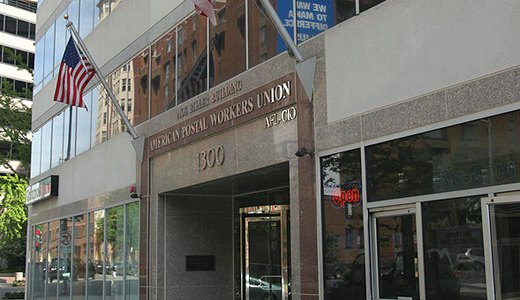
The United States Postal Service has announced that it will examine 3,700 post offices for the possibility of closure. However, it will also analyze its overall retail strategy and attempt to partner with small businesses across the country.
The post office is required to cut $20 billion from its operating budget by 2015 and is “losing revenue as we speak,” according to Postmaster General Patrick Donahoe.
In response to the looming crisis, said Donahoe, “We are going to make significant changes in the way our customers interact with the postal service.”
Most of the post offices being reviewed were selected because they saw little foot traffic and averaged about $50 a day, while seeing less than two hours of work. In other words, many of these locations were most likely in small or rural towns, where people rely on traditional mail, even if customers overall are dwindling in those areas.
Dean Granholm, vice president of delivery and post office operations, said that because revenue is quickly declining at these locations, 4,000 to 4,500 employees could lose their jobs.
“Cutting post offices is not the solution to the problem,” said Sally Davidow, spokeswoman for the American Postal Workers Union, which represents 220,000 employees.
One solution Granholm sees is the post office’s plan to roll out “Village Post Offices,” which would be the result of a partnership with small businesses. The offices, said the report, would give customers access to collection boxes, post office boxes and prepaid Priority Mail Flat Rate boxes and envelopes. The Village Post Offices would be staffed by the small businesses they unite with.
This move, said Donahoe, would contribute revenue to small businesses and keep those people employed, while stimulating the economy by increasing traffic and sales.
Remarked Donahoe, “It gives small businesses the opportunity to stay open and stay vibrant in the community.”
The post office will release the initial series of Village offices in autumn, and 2,500 offices within a year.
In the age of email and social networking, many people have contemplated whether the relevance of snail mail is waning. But, although Canada, for instance, has seen a 17 percent drop in mail delivery in recent years, according to the Canadian Press, rumors that traditional mail is rapidly approaching its 11th hour are grossly exaggerated.
Jon Hamilton, a spokesman for the Canadian Postal Service, commented, “There’s no question the Internet is having a profound impact on the postal system, but we still have a huge letter mailing business, one of the biggest parcel businesses in Canada, and … we can get to the mailbox of every Canadian and actually put something in their hand.”
In the U.S., moreover, where mail volume has decreased by 45.1 billion pieces in the past five years, the post office still employs three times as many union members as the country’s auto industry. It is vital to providing jobs to working-class Americans, regardless of the progress of email.
According to EdgeMark, it is not only possible, but important, for snail mail and electronic mail to co-exist, as each has specific benefits. President Obama’s election campaign, for example, used both the Internet and direct mail to reach voters, and each method was important in its own way.
But it is traditional mail that is seeing valuable union jobs threatened, and, in addition to the danger of closing locations, the Postal Service is now looking to end mail delivery on Saturdays. But within the system itself, there is debate over whether a five-day delivery plan would actually solve anything.
The union and various other postal employee organizations have emphasized the negative impact that move would have on employment and have urged Congress to protect six-day delivery, noted Postal News Blog.
The APWU outlined important facts, one of which is that there would be a loss of 80,000 jobs or more if Saturday delivery were eliminated. Another is that residents of rural towns, or those who are disadvantaged or elderly, depend on the USPS for things like prescription drugs. Also, millions of businesses receive important parcels on Saturday, the report noted.
In order to really drive the message home about the union-mail relationship, the APWU started an organizing drive on July 25, connecting with potential members across the country and educating them on the importance of the union. The campaign highlighted the post office’s ongoing financial crisis and the damage it could inflict upon workers.
“The postal service is in danger of collapse,” said APWU President Cliff Guffey, “and our members’ jobs are threatened. Locals and state organizations must continue the organizing campaign. Bringing in new members is essential to our survival.”
Photo: The American Postal Workers Union building in Washington, D.C., via Wikipedia.











Comments